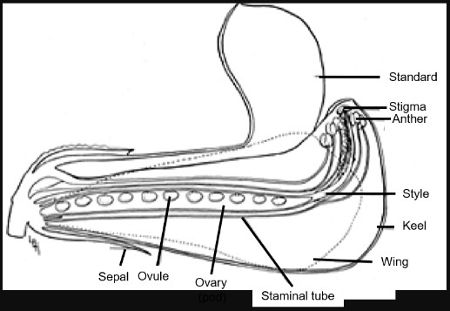By Benjamin Phillips
Growing produce in greenhouses and hoop houses can be an effective and economical venture for early production of warm-season fruiting vegetables and for winter production of cool-season leaf and root vegetables. In addition, these structures are sometimes subsidized by state and federal agencies to support local four-season production of high-value crops. However, pollination of fruiting vegetables can be a challenge in enclosed structures.
Which fruiting vegetable crops work well in the greenhouse?
Cucumbers, watermelon, melon, summer squash, tomatoes, peppers, eggplant and beans are great greenhouse candidates for early summer production. Peas can be started early in these structures as well. For larger fruited vine crops, trellising can be utilized with mechanisms to support the weight of fruits (onion bags, panty hose, etc.). Bush type and vine type squash plants can be utilized with extra attention paid to spacing.
Which greenhouse crops require pollination assistance?
Standard cucurbits have separate male and female flowers, which require a pollinator to bring pollen from a male flower over to a female flower. Cucurbits naturally produce many more male flowers than female flowers to ensure bees come in contact with pollen while searching for the larger nectar pots in female flowers.
Breeding has created different flowering behaviors of these crops. Gynoecious cucumbers have been bred to produce predominately female flowers to maximize yield, but they require 15 percent interplanting with a conventional “sire” cucumber with the typical number of male flowers. Some seed companies will sell these seeds pre-mixed. Seedless cucumbers do not need pollination at all, and pollination will actually cause misshapen fruit.
However, the female flowers of seedless watermelon still need to receive pollen from a regular seeded diploid watermelon to trigger fruit set. Seedless watermelons require 30 percent interplanting with diploid “pollinizers” to maximize fruit set and yield. Often, a standard seeded watermelon is used as a pollinizer. Some muskmelons and cantaloupe cultivars can have self-fertile hermaphroditic flowers with both male and female parts, but still require a pollinator.

Some crop families have “perfect” flowers, meaning that male and female parts a co-located on the same flower, thus allowing self-pollination. Solanaceous crops are one crop family with perfect flowers; however, the tubular, downward-facing flowers need to be agitated to release pollen from the male part onto the female part. Though this occurs naturally by wind, pollination can be enhanced with mechanical vibration provided by growers or bees. Bumble bees do this particularly well with a technique called “sonication,” wherein they clamp onto the flower tube and flex their flight muscles to vibrate the pollen out.
Environmental conditions can greatly affect the quality and quantity of pollen release to the female part of the plant. Tomatoes and peppers need nighttime temperatures between 55-70 degrees Fahrenheit to produce pollen, and daytime temperatures should not exceed 90 F. Flowers will abort completely after 4 hours over 100 F. In addition, relative humidity should be between 50-80 percent to prevent pollen from being too dry to stick to the female part or too sticky to fall away from the male parts. Some parthenocarpic varieties exist that set fruit in cooler temperatures without pollen transfer.

Beans are also perfect flowers, and lima beans fully self-pollinate before flowers open. But bees can boost yields of pole beans, snap beans and green beans and are necessary for setting pods in scarlet runner beans. Due to the complicated flowers of legumes, bees must learn to pollinate them.